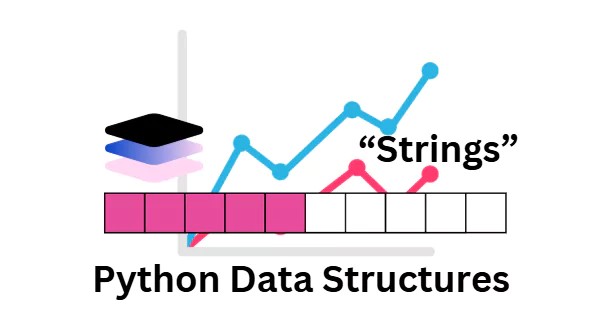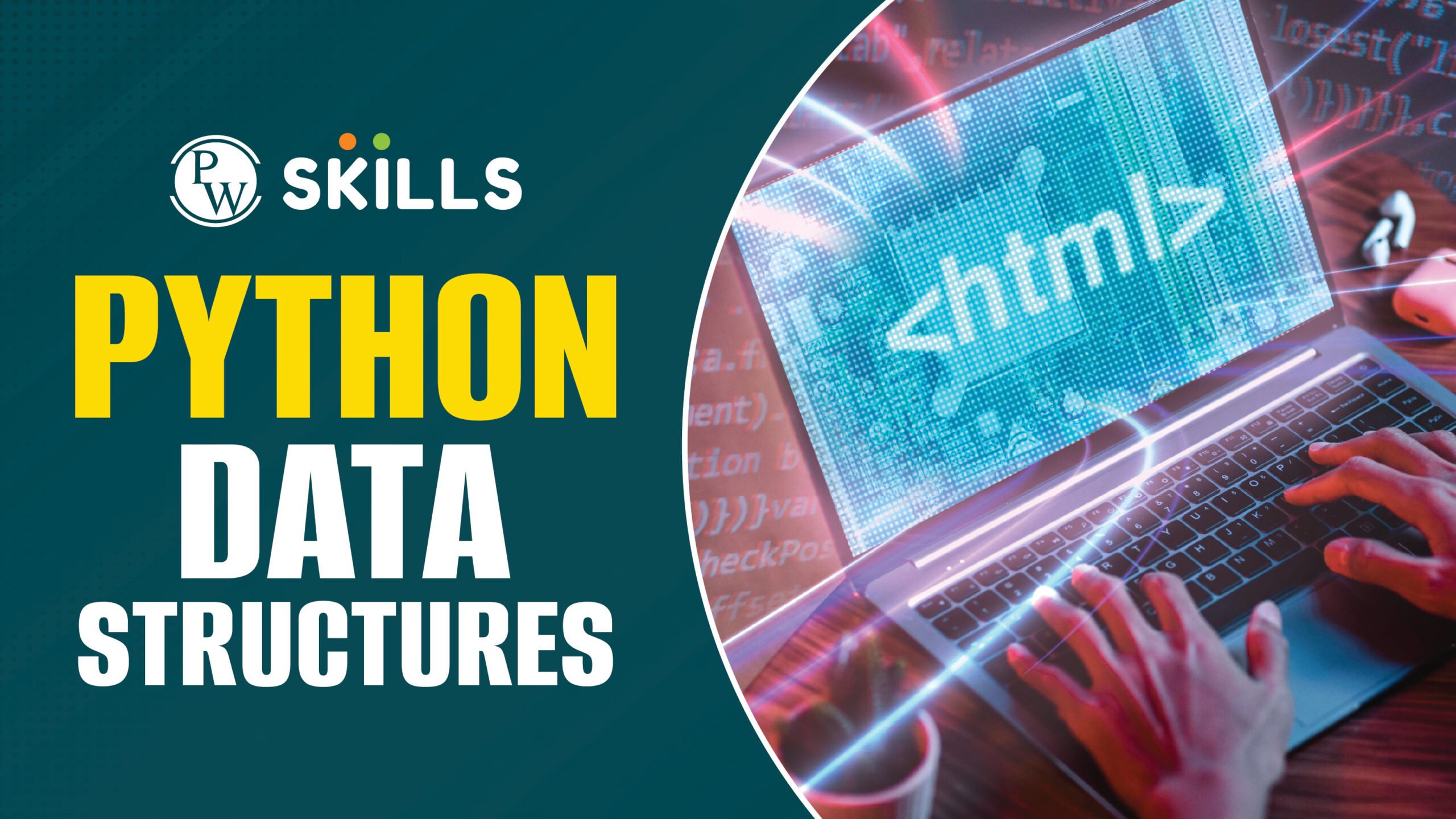Python language offers a wide variety of built-in Python data structures that are important for organising and maintaining data efficiently. Data structures are important for writing optimized code and organizing and storing data in an efficient manner.
In this article, let us get familiar with different types of data structures and their importance in Python programming.
Python Data Structures Overview
Data structures are the backbone of programming, allowing developers to store, retrieve, and manipulate data efficiently. Python, a high-level and versatile language, offers a variety of built-in and user-defined data structures that cater to different computational needs. Whether you are working with large datasets, optimizing performance, or developing complex algorithms, having a strong grasp of Python’s data structures is crucial.

In this article, we will go through the different types of data structures in Python, understand their functionalities, and learn when to use them. By the end, you will have a clearer understanding of how these structures can enhance the efficiency of your Python programs.
Why Are Data Structures Important in Python?
Data Structures are essential because they define how data is stored, accessed, and manipulated. Choosing the right data structure is crucial because it makes a significant difference in the performance and maintainability of your code.
A well-optimized data structure helps reduce computational complexity, manage memory efficiently, and improve execution speed. Understanding how and when to use a particular data structure is key to writing clean and effective Python programs.

For instance, using a dictionary instead of a list for key-based lookups can drastically improve retrieval time. Similarly, using a set instead of a list to store unique elements reduces redundancy and improves performance.
Understanding Python data structures is crucial for writing efficient programs. By choosing the right data structure, developers can optimize performance and solve problems more effectively. Continue practicing with real-world problems to deepen your knowledge.
Types of Data Structures in Python
Python provides a variety of data structures, which can be broadly categorized into built-in data structures and user-defined data structures. Let us know about them in a bit of more detail.
Built-in Data Structures in Python

The built-in data structures refer to those data structures that are already available and accessible in Python. Python has several built-in data structures that allow developers to store and manipulate data effortlessly. These include:
- Lists: A dynamic, ordered, and mutable collection of elements
- Tuples: Similar to lists but are immutable, meaning their contents cannot be changed
- Sets: An ordered collection of unique elements, useful for membership testing and eliminating duplicates
- Dictionaries: A collection of key-value pairs that allow fast lookups and data retrieval
User-Defined Data Structures in Python

The user-defined data structures in Python refer to the data structures that are built by users for their tasks. Beyond built-in structures, Python allows developers to implement more complex data structures to suit specific needs. These include:
- Stacks: A data structure that follows the LIFO principle, that is, the Last-In-First-Out principle, often used for managing function calls and undo operation
- Queues: Operates on the FIFO principle, that is, the First-In-First-Out principle, commonly used in scheduling and buffering operations
- Linked Lists: A sequence of nodes where each node contains a reference to the next, making insertion and deletion more efficient
- Trees and Graphs: Hierarchical and interconnected structures used for representing relationships in complex systems like social networks, file systems, and search algorithms
Python Lists
Lists are one of the most common data structures in Python that is rigorously used because of the ease and versatility that it provides. Lists are dynamic, as they can grow or shrink in size as per the need. The list data structure in Python allows indexing, slicing, and iteration too.
Example List Operations
| List = [ 1, 2, 4, “PW”, 5 ]print(“\n List with different values =”)
print(List) #accessing elements from the list using indexes print(List[0]) print(List[1]) |
Output:
| List with different values=
[ 1, 2, 4, ‘PW’, 5] 1 2 |
Python Tuples
Tuples are similar to the lists as they function quite similarly, but are immutable, meaning their contents cannot be changed after creation. Tuples are more memory-efficient and also safer for storing fixed data. Tuples are perfect for representing fixed collections of items, such as coordinates or configuration settings.
Example Tuple Operations
| tuples= ( 1, 2, 4, “PW”, 5 )print(“\n Tuple with different values =”)
print(tuples) #accessing elements from the tuple using indexes print(tuples[0]) print(tuples[1]) |
Output:
| Tuple with different values =
( 1, 2, 4, ‘PW’, 5 ) 1 2
|
Python Dictionaries
Dictionaries are the best data structures for storing key-value pair data in it. They are defined using the curly braces ({ }) or the dict( ) constructor. These are mutable data structures that allow modification of key-value pairs after creation. The keys in a dictionary must be unique and immutable to provide fast lookups.
Example Dictionary Operations
| My_dict = { “name”: “Alice”, “age”: 25 }
print(My_dict[ “name” ]) |
Output:
| Alice |
Python Sets
Sets are useful when you need to store unique elements and perform quick membership checks. Since sets are unordered, they do not support indexing. Sets are widely used for eliminating duplicates and performing mathematical set operations.
Example Set Operations
| Set= set([ 1, 2, 4, “PW”, 5 ])print(“\n Set with different values =”)
print(Set) #accessing elements using for loop print(“Elements in set are:”) for i in Set: print( i, end = “ “) print() |
Output:
| Set with different values=
{ 1, 2, 4, ‘PW’, 5 } Elements in set are: 1 2 4 PW 5 |
Advanced Python Data Structures

Now that we have seen and understood all the built-in data structures of Python, as the needs and demands increase, we need something much better and bigger. Beyond the fundamental Python data structures, Python allows developers to work with more advanced and specialized structures.
These are particularly useful in handling large datasets, complex algorithms, and real-world applications. We have mentioned some major advanced Python data structures below:
Stacks in Python
A stack is a collection that follows the LIFO principle (LIFO stands for the Last-In-First-Out principle). It is widely used for function call management, undo operations, and syntax parsing. Python’s built-in list can be used as a stack, but for efficiency, the “collections.deque” module is preferred. It is one of the most basic types of Python Data Structures.
Queues in Python
A queue is a collection that follows the FIFO principle (FIFO stands for the First-In-First-Out principle). It is widely used for scenarios like task scheduling, buffering, and managing requests in web applications. For more advanced queue implementations, Python provides a “queue” for thread-safe operations.
Linked Lists in Python
Linked lists store elements in nodes where each node holds a reference to the next node. This structure allows efficient insertion and deletion but requires more memory due to pointers. Linked lists are useful in dynamic memory allocation and when frequent insertions and deletions are required.
Trees and Graphs in Python
A tree is a hierarchical structure where each node has a parent and possibly multiple children. The most common type is the binary tree, where each node has at most two children. Binary trees are widely used in searching algorithms, hierarchical data representation, and the decision-making process.
A graph consists of nodes and edges, known as vertices and connections, respectively. They are used in modeling networks, social connections, and pathfinding algorithms like Djikstra’s algorithm. Graphs play vital roles in AI, recommendation systems, and real-time navigation applications.
Learn Python Programming and DSA With PW Skills
Become proficient in Python libraries and Python Data Structures and learn to prepare, process, clean, and visualize data for analysis purposes. Learn about Python programming and data structures and algorithms in PW Skills Decode Python with DSA Course.
Get in depth tutorials and practice exercises to strengthen your concepts in Python programming. Learn everything with recorded lectures provided by dedicated mentors throughout the program with doubt support, real world projects, practice exercises, assignments, and more.
Python Data Structures FAQs
Q1. What are data structures in Python?
Ans. Python, being a high-level and versatile language, offers a variety of built-in and user-defined data structures that cater to different computational needs. Whether you are working with large datasets, optimizing performance, or developing complex algorithms, having a strong grasp of Python’s data structures is crucial.
Q2. What are the different types of data structures in Python?
Ans. Python provides a variety of data structures, which can be broadly categorized into built-in data structures and user-defined data structures.
Q3. What is a set data structure in Python?
Ans. Sets are useful when you need to store unique elements and perform quick membership checks. Since sets are unordered, they do not support indexing. Sets are widely used for eliminating duplicates and performing mathematical set operations.
Q4. Why are Python Data Structures Important?
Ans: Python data structures keep the code well optimised, structured, organised and store programs in an efficient manner to help developers and systems carry out the process effectively.

